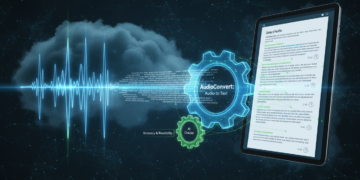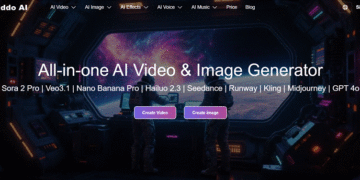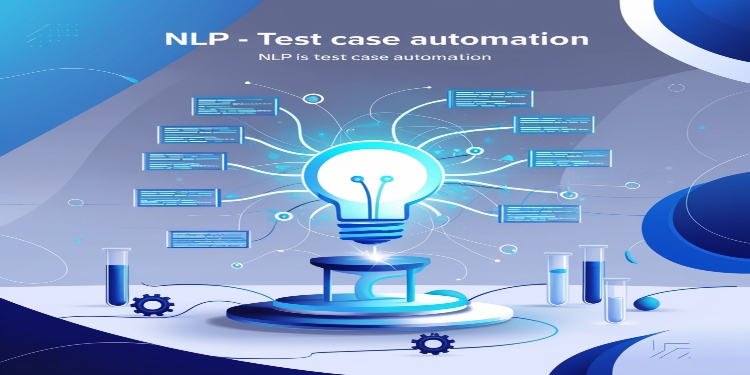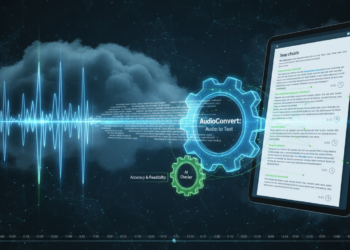Today, automation, quality, and speed are the three most essential things in software creation. Fast updates are still a big part of Agile and DevOps, so test automation that is smarter, faster, and scalable is more critical than ever. Using Natural Language Processing (NLP) to make tests run automatically is one of the most innovative concepts in this field. That is how AI QA has gained popularity.
This blog explores the evolution of AI in QA, how NLP is revolutionizing QA teams through automation, and how AI testing tools make it all possible.
What Is NLP, and Why Does It Matter in QA?
NLP is an area of Artificial Intelligence (AI) that attempts to help machines understand and interpret the spoken language delivered by humans. It can be used in AI models for QA and test automation.
- Convert written requirements or user stories into executable test scripts.
- Understand natural-language test cases and map them to automation code.
- Extract test scenarios from documentation, bug reports, or release notes.
- Enable voice or text-based interactions with test automation platforms.
This facilitates technical and non-technical team members’ participation in the test-making process. It also reduces dependency on scripting languages or specific automation frameworks.
How NLP Understands Test Scenarios?
NLP must first understand the structure and intent of human-written input before it can efficiently automate the creation of test cases. This might be a line from a requirement document, user story, or straightforward test scenario expressed in plain English.
NLP models accomplish this by using a number of fundamental linguistic strategies that enable them to deconstruct and comprehend the text.
This is how it operates:
- Tokenization
It separates the input text into discrete words or phrases (tokens). “The user clicks the login button,” for example, is changed to [The] [Clicks] [The] [button] [login] [user]. - Part-of-Speech (POS) Tagging
Every token’s grammatical function—whether it be noun, verb, or adjective—is investigated. This aids the AI in comprehending actors (“user”), objects (“button”), and actions (“clicks”). - Named Entity Recognition (NER)
The model identifies specific elements or inputs within the sentence, like field names (“email”), page names (“homepage”), or credentials (“username”). These are tagged for further processing. - Dependency Parsing
NLP examines how words relate to each other—for instance, recognizing that the “login button” is what the “user” is clicking. This allows for accurate mapping of user interactions to test steps. - Intent Recognition
The model evaluates the overall purpose of the sentence—such as validating a login, submitting a form, or checking navigation flow. This high-level understanding is crucial for selecting the right automation actions.
By applying these techniques, NLP engines can interpret both the structure and intent of plain language test scenarios. They can then infer:
- Actions (e.g., click, input, submit)
- Inputs and elements (e.g., email field, password field)
- Validations (e.g., “should redirect to dashboard”)
- Expected outcomes (e.g., success messages, UI changes)
This structured understanding is what enables NLP-based AI to generate complete and executable test scripts from simple written instructions—bridging the gap between human language and automated testing logic.
From Natural Language to Executable Test Scripts
Translating plain English test situations into fully functional, code-based test scripts is one of NLP’s most potent test automation capabilities. This process entails multiple phases of interpretation, mapping, and generation, all of which are managed behind the scenes by AI models.
Let’s walk through how this transformation typically works:
Input Interpretation (Natural Language Ingestion)
The process begins when a user provides a test step or scenario in natural language. For example:
“Check that clicking on the login button redirects the user to the dashboard page.”
This input might come from a tester typing in a scenario, a product owner writing acceptance criteria, or even a voice-to-text interface.
Intent and Entity Recognition
The NLP engine breaks down the sentence to identify the intent (what action needs to be tested) and entities (what elements or inputs are involved). In our example, the engine detects:
- The action: “clicking on the login button”
- The expected outcome: “redirects the user to the dashboard page”
Using named entity recognition and dependency parsing, the tool understands the relationships between actions and expected behaviors.
Contextual Mapping to UI Elements and Actions
Once the entities and actions are identified, the tool maps them to actual automation commands based on the application under test. For instance:
- “clicking on the login button” may become driver.findElement(By.id(“login”)).click();
- The element locator strategy may be inferred based on a UI map, DOM inspection, or previous test data.
The model chooses the best match based on what it knows about the application and test environment—often allowing for fallback options if certain elements change.
Assertion and Validation Logic
Next, the AI translates the expected outcome into an assertion that validates the behavior.
- “Redirects to dashboard page” might be converted into a URL check:
assertEquals(driver.getCurrentUrl(), “https://example.com/dashboard”); - Or a check for a specific UI element:
assertTrue(driver.findElement(By.id(“dashboard-header”)).isDisplayed());
These validations ensure the test not only performs actions but verifies correctness, making the script complete and testable.
Script Generation and Output
Once the actions and validations have been identified, the tool compiles a structured script with a preferred programming language or automation framework (such as Playwright with Python, Cypress with JavaScript, or Selenium with Java).
A complete, runnable test script might look like this:
// Using Playwright (JavaScript)
test(‘Login redirects to dashboard’, async ({ page }) => {
await page.goto(‘https://example.com/login’);
await page.fill(‘#email’, ‘user@example.com’);
await page.fill(‘#password’, ‘securepassword’);
await page.click(‘#login’);
await expect(page).toHaveURL(‘https://example.com/dashboard’);
});
After that, this script can be stored, run as a test suite component, and incorporated into CI/CD processes.
Benefits of Using NLP in Test Case Automation
Simplified QA procedures and enhanced collaboration between technical and non-technical personnel are two top advantages of integrating NLP into test automation. By allowing users to create and analyze test cases in plain English, NLP helps users close the gap between executable scripts and business logic.
Here’s how NLP is transforming traditional testing practices –
Simplifies Test Creation for All Team Members
NLP eliminates the need to write test cases in complex programming languages. If you just specify the test steps, such as “Make sure the login button navigates to the dashboard,” the AI will generate a thorough, executable script that testers, product managers, and business analysts can use, making test automation easier for non-programmers to understand.
Accelerates Test Development Cycles
NLP drastically cuts down on test creation time by automating the conversion of user stories or requirement documents into structured test cases. Teams can now keep up with rapid release cycles since what used to take hours to develop manually can now be generated in seconds.
Enhances Cross-Functional Collaboration
QA engineers and organization stakeholders may work together more easily, thanks to NLP. There is no need for technical and organization teams to translate or interpret tests because they are written in a format that is legible by humans. By using the same “testing language,” everyone can communicate more clearly and avoid misunderstandings.
Minimizes Script Maintenance Overhead
Test scripts often break when UI elements change or workflows evolve. Testers can avoid the possibility of faulty tests and save hours of manual maintenance by using NLP-based solutions that can intelligently recognize these changes and modify scripts automatically.
Improves Test Coverage and Quality
NLP-powered AI can find test coverage gaps and recommend more test scenarios by examining user stories, functional requirements, and historical defect data. More thorough testing and increased assurance in the caliber of the final product result from this.
Real-World Use Cases of NLP in Test Automation
NLP isn’t just a futuristic idea; QA teams are currently using it to scale and optimize testing processes. NLP creates new use cases that speed up, improve the intelligence, and broaden automation by translating human language into actionable test logic.
Here are some practical ways NLP is currently reshaping test automation:
Requirement-Based Test Generation
Tools with NLP capabilities can automatically create test cases by scanning user stories, functional specifications, or product requirement documents. The AI comprehends the purpose of the requirements and generates a set of test cases. These test cases are in line with the characteristics that have been described, guaranteeing greater coverage and lowering the amount of manual labor required to translate each line into test logic.
Conversational Test Assistants
Some platforms now offer chat-based interfaces or natural language input fields. Testers can type commands like:
“Create a test for user registration with missing password”
The NLP engine understands the scenario and instantly generates the steps, data inputs, and validation logic required to build the complete test. This conversational approach enables faster and more intuitive interaction with automation tools—even for those with minimal technical knowledge.
Auto-Documentation of Test Scripts
NLP can also work in reverse—translating complex test scripts into readable, plain-English descriptions. This is extremely useful for audit trails, stakeholder reviews, and team onboarding. Auto-generated documentation ensures that even non-technical stakeholders understand what the test is doing and why.
Bug Report Analysis and Test Suggestions
NLP algorithms can examine previous bug reports, support tickets, or defect logs to find patterns and reoccurring problems. To stop similar vulnerabilities from escaping in the future, they can use these insights to suggest new test scenarios or improve ones that already exist.
Best Practices for Using NLP in Test Automation
To get the most out of NLP in QA, teams should follow these practices:
- Write Clear and Structured Scenarios
Use simple, well-formed sentences when authoring natural language inputs. Avoid vague or overly complex phrasing.
- Validate All AI-Generated Output
Always review the test steps and logic before running them. Use AI as an assistant—not as a replacement for QA expertise.
- Feed Contextual Information
Provide additional data such as user flows, acceptance criteria, or UI screenshots to help NLP tools generate more accurate test cases.
- Start With Pilot Projects
Introduce NLP tools gradually—begin with regression or smoke tests before applying them to critical features.
- Combine With Traditional Automation
Although NLP tools can be quite effective, their combination with code-based frameworks guarantees greater robustness and flexibility.
NLP is revolutionizing test automation by enabling tools to convert plain-language requirements into executable test scripts. This makes test case creation faster, more accessible, and far less dependent on manual coding. However, generating test scripts is just the beginning—validating them across real-world user environments is where the real challenge lies.
That’s where cloud testing becomes critical. Cloud-based platforms eliminate infrastructure constraints and allow these tests to scale efficiently, especially within fast-moving CI/CD pipelines.
Cloud-platforms like LambdaTest play a key role in this ecosystem by offering a robust cloud infrastructure that supports frameworks like Selenium, Cypress, and Playwright. It enables parallel execution across 3000+ browser and OS combinations and 10,000+ real devices while also providing rich debugging insights with logs, screenshots, and video recordings. The AI-generated scripts run across a wide range of browsers, devices, and OS versions to ensure accuracy and reliability.
There are several AI Testing Tools by LambdaTest helpful in such cases. For teams adopting NLP-powered automation, LambdaTest serves as the ideal layer to execute, validate, and analyze AI-written test cases at scale.
KaneAI developed recently by LambdaTest is a GenAI native QA Agent-as-a-Service platform. Using natural language, the platform enables teams to create, debug, as well as evolve tests using natural language. KaneAI is built for high-speed quality engineering teams that integrate smoothly with the rest of LambdaTest’s offerings around test orchestration, execution and analysis.
Final Thoughts
Test automation is undergoing a revolution thanks to NLP. QA teams are working more quickly, collaborating more effectively, and producing greater quality software by enabling conversational engagement with testing tools, intelligent test generation, and natural language test writing.
Using AI testing tools driven by NLP will become crucial as more teams adopt AI QA methods to remain competitive in a high-speed delivery environment. Testing in the future will be intelligent, adaptable, and language-driven in addition to being automated.











































































